The best places to visit in Puerto Rico don’t just look good in the many pictures you’ll take home; they hit you right in the soul. It’s the kind of place where 500-year-old forts share the stage with lagoons that mysteriously glow at night, and where beaches come with both cocktails and the echo of cannon fire from the past.
More than anything though, it’s a place where music, energy, and food all shine through thanks to the unique melting pot of American, African, and Caribbean cultures. The spirit here is impossible to fake: part defiance, part joy, and super contagious.
Old San Juan
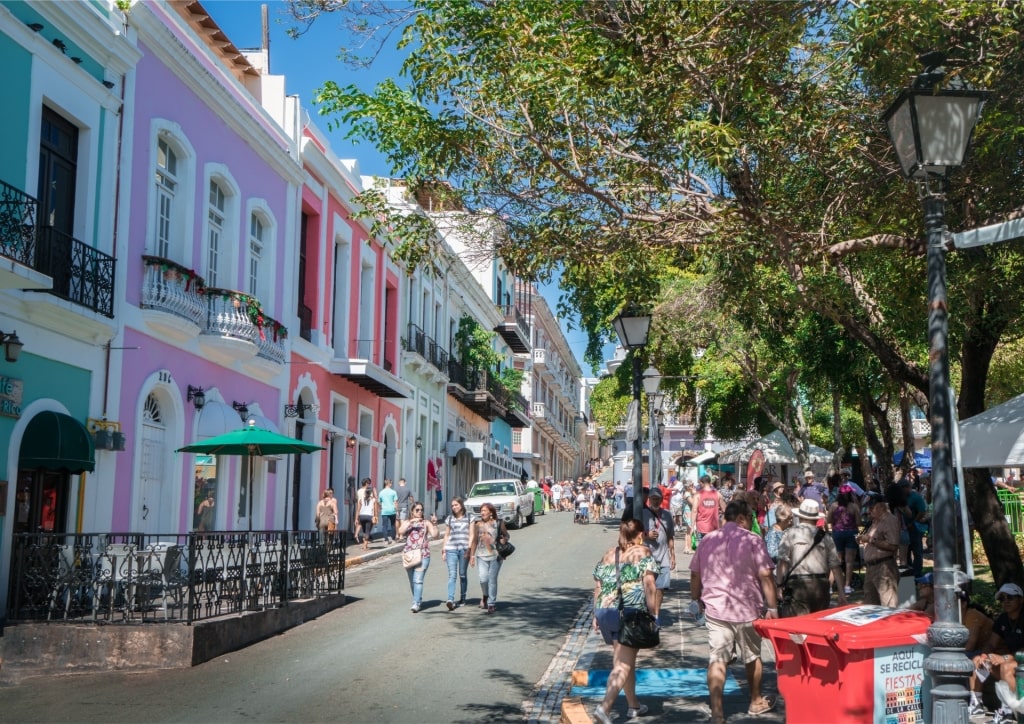
Old San Juan
Founded in 1521 and the second-oldest European-founded capital in the Americas, Old San Juan is probably the number one best place in Puerto Rico. How so? Well, it’s the country’s beating heart and a stunner to boot.
Originally a defensive harbor city, San Juan has densely tight streets, huge plazas, and massive forts. A keystone in Spain’s colonial empire, it saw off everyone from lowly pirates to the high-ranking Brits and a few in between, too.
Now, it’s much more welcoming, its cobbled streets and pastel buildings alive with music, cafés, galleries, and more. Eschew the main tourist souvenir shops for artisan stores on Calle del Cristo and Calle San Sebastián.
Paseo de La Princesa is where you’ll find street performers and snack carts, while the shady benches around Plaza Colón are where locals gather to put the world to rights. If it’s quiet reflection you’re after, Capilla del Cristo is a small 18th-century chapel considered a cultural icon by locals.
Casa Bacardí
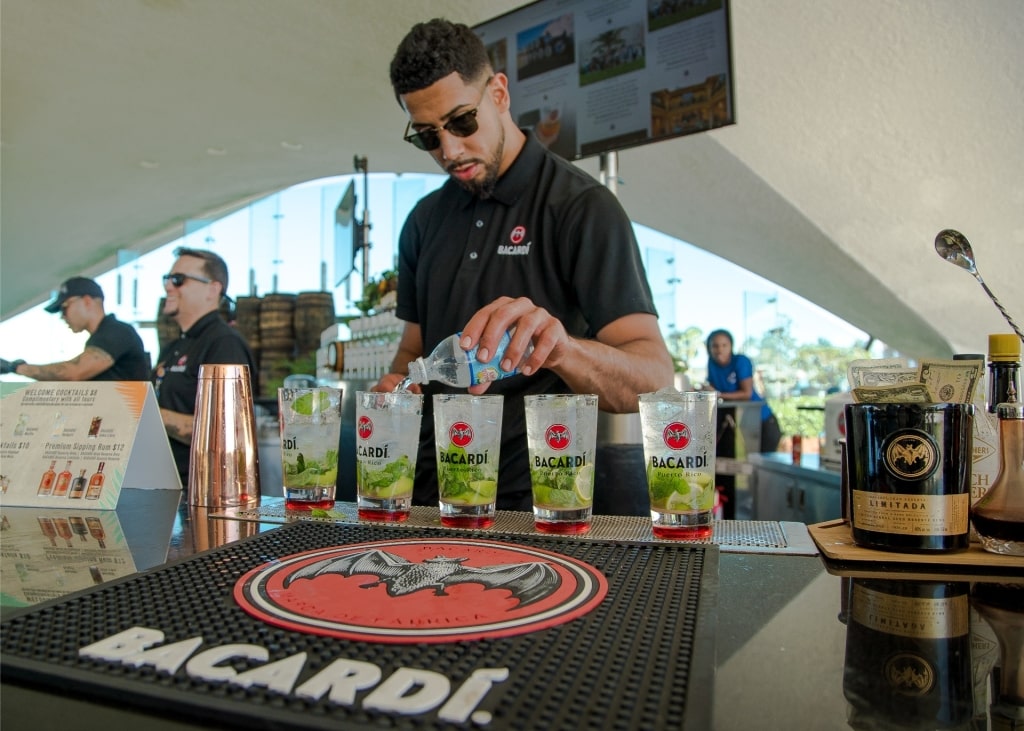
Casa Bacardí
Famed rum brand Bacardí may have been founded in 19th-century Cuba but it was in Puerto Rico that it grew to worldwide fame. A distillery was first opened here in 1936 to serve the US market, but it was the launch of its Cataño facility, just across the bay from Old San Juan, that took the brand to another level.
Casa Bacardí—also known as the “cathedral of rum”—spans more than 137 acres and bottles almost 400,000 litres of rum daily. Visitors to the site can take part in experiences including tours, tastings, and mixology classes.
One of the best souvenirs is to bottle your own Casa Bacardí Special Reserve, not sold anywhere else in the world. The trip over by boat from San Juan is pretty epic, too, as are the incredible views back over the old town from the facility’s Bat Bar Pavilion.
El Yunque Rainforest
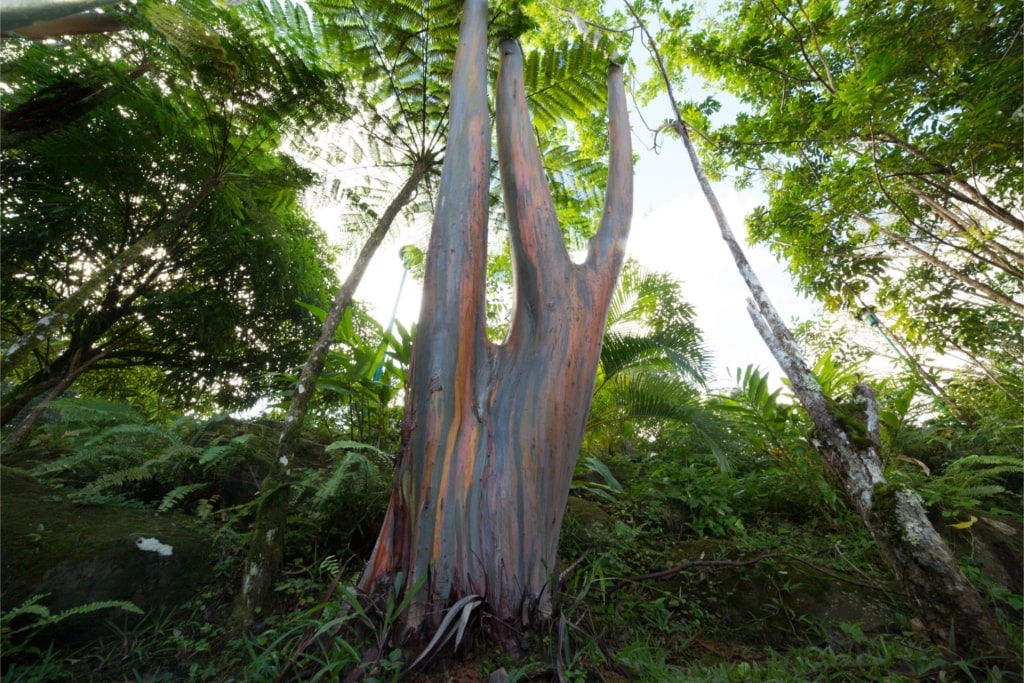
El Yunque Rainforest
If you’re looking for your own version of Eden, you might just find it in El Yunque, without doubt one of the best places to visit in Puerto Rico.
The only tropical rainforest in the U.S. National Forest System, El Yunque is dripping with life and associated adventure. Marvel at towering waterfalls, hike through thick jungle trails, and listen for the background hum of the resident coquí frogs.
Close to the town of Río Grande and an hour’s drive from the capital, it’s worth the journey. Cooler, quieter, and greener than the sultry coast, the rainforest shows off Puerto Rico’s other side, one that’s eminently more relaxed and closer to nature.
Highlights of a visit include La Coca Falls for photos and the Yokahú Tower observation deck for the magnificent views. The indigenous Taíno considered these lands sacred, and it’s not hard to see why they were in awe of the almost spiritual nature of the earth here.
Read: Best Hikes in Puerto Rico
Castillo San Felipe del Morro
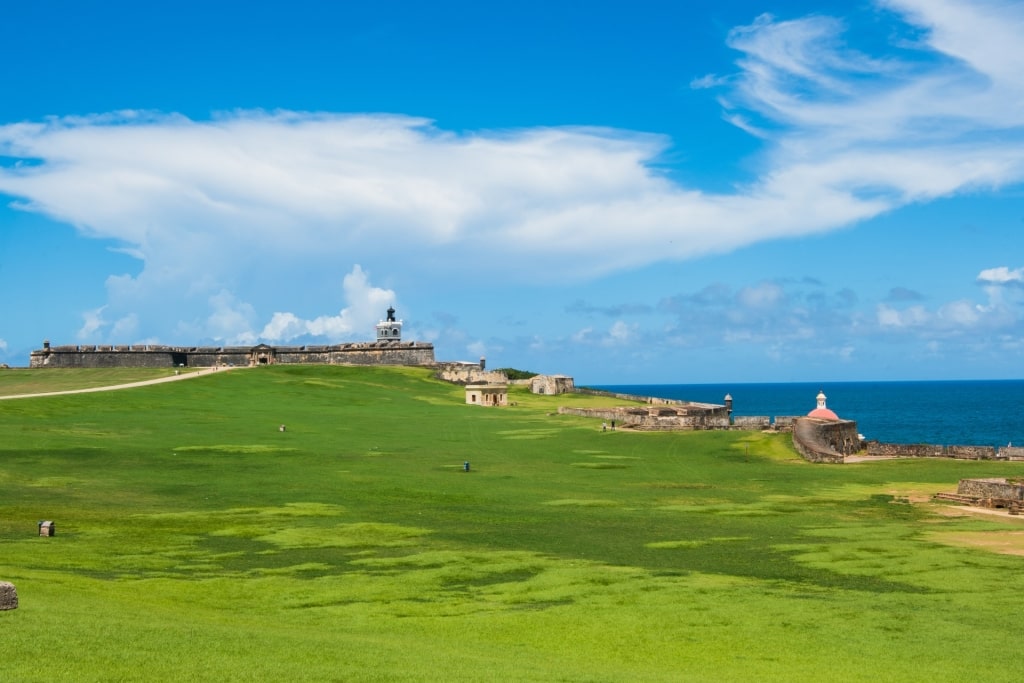
Castillo San Felipe del Morro
One of the best things to do in San Juan is to visit Castillo San Felipe del Morro. This famed 16th-century fortress sits on the very tip of the peninsula that is home to Old San Juan and where the Atlantic crashes onto the coastline. Along with Castillo de San Cristóbal on the other side of town, the two formed the city’s colonial-era defences and now sit in honor of Puerto Rican resilience.
Constructed back in 1539, the castle has seen everyone from Sir Francis Drake to the US Navy try to take it down and, despite taking cannon fire and many attempts to blow it to smithereens, it still stands proud.
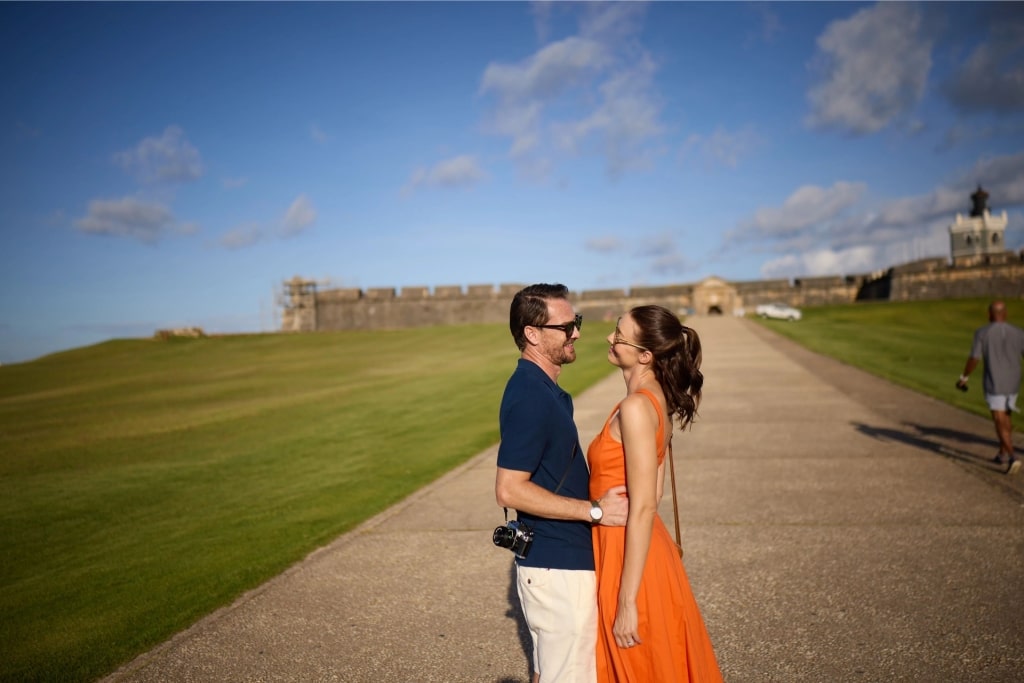
Castillo San Felipe del Morro
A visit is a pilgrimage to the island’s history, but even if you don’t go in for all the associated tales of derring-do, there’s something extremely powerful and reassuring about standing on the ramparts and looking out to sea.
If your trip coincides with a stiff breeze, especially on a weekend, look out for families flying kites from the surrounds of the fortress. It can make for quite incredible images with the castle in the background.
Laguna Grande Bioluminescent Bay
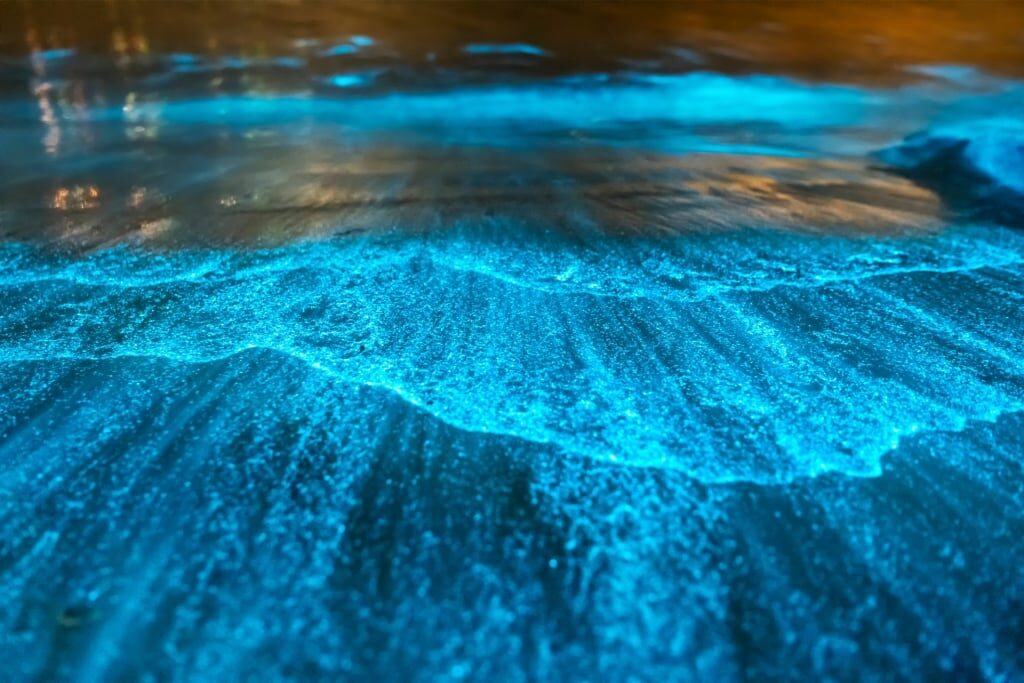
Bioluminescent bay in Puerto Rico
There can be few better things to do in Puerto Rico than pay a visit to Laguna Grande, a one-of-a-kind place. This calm, coastal lagoon close to the town of Fajardo glows at night thanks to tiny plankton called dinoflagellates. Like an aquatic version of a firefly, these tiny organisms light up when disturbed either by hand, paddle, or a passing manatee.
The island actually has three three bioluminescent bays but Laguna Grande is the most accessible, making it a go-to for visitors when the sun dips beyond the horizon. The best way to sample it all is by kayak, less noisy and more magical than motorized trips which are also offered. If it’s a moonless night, it’s even more special.
Castillo San Cristóbal
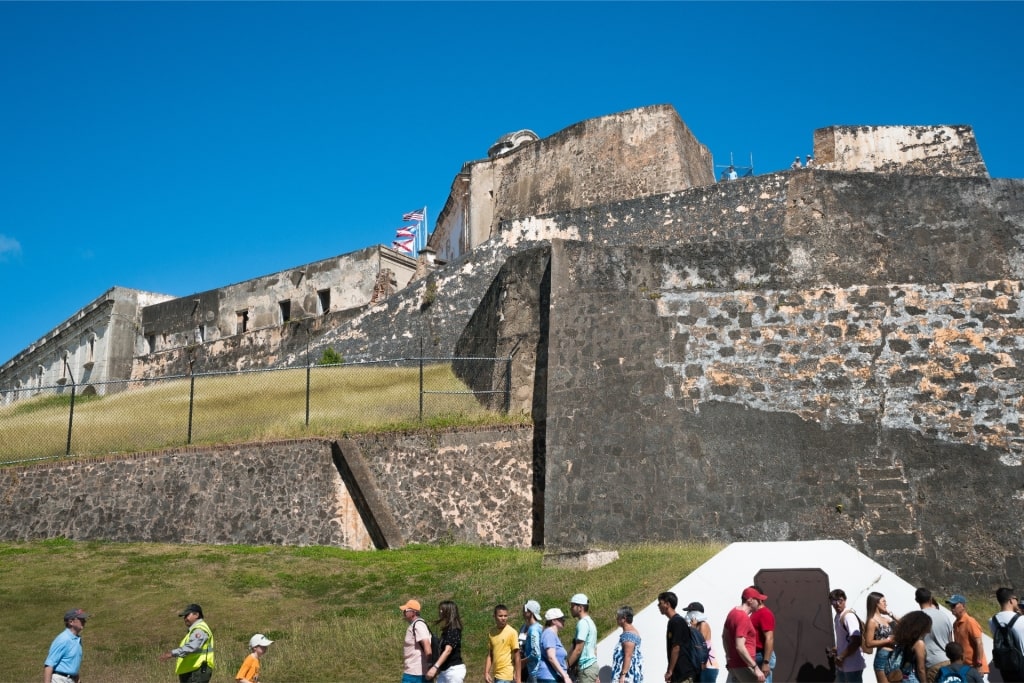
Castillo San Cristóbal
Puerto Rico is known for its historic buildings. While El Morro might be San Juan’s fortress superstar, its sibling, Castillo San Cristobal, is just as impressive.
While the former was designed to ward off attacks from the water, San Cristobal’s role was to put paid to land invasion. Naturally more difficult to defend than an invasion from the sea, it was, at its peak, the largest fort built by the Spanish in the New World.
On a visit, it’s easy to play colonial-era war games in your mind. The tower is a maze of underground tunnels, hidden chambers, and look-out points—but tends to have fewer crowds than El Morro, allowing more time to explore. Check out the Devil’s Sentry Box, La Garita del Diablo, where soldiers were said to vanish without reason, if you want to up the spooky factor.
Isla Verde Beach
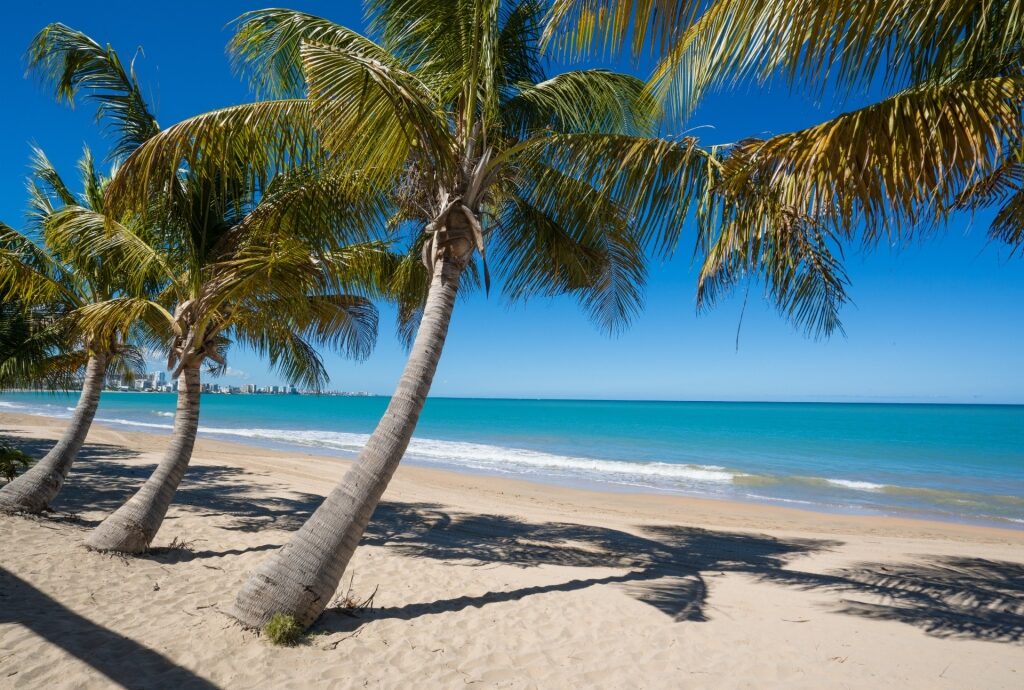
Isla Verde Beach
If you’re in or around the capital San Juan and fancy a bit of beach time, a day on the long, golden sands of Isla Verde is one of the best things to do in Puerto Rico.
Located in the Isla Verde neighborhood of Carolina, a 30-minute drive from downtown San Juan, it actually consists of three main beaches with three slightly different vibes. Balneario de Carolina is family-friendly with good services, lifeguards, showers, and places to picnic. Alambique Beach is a little more sociable thanks to the buzzy café and bar scene, while Pine Grove Beach is where those looking for adrenalin head.
Thanks to the angle of the waves here, there’s some mild surfing and body boarding to be had. Watersports on offer include jet ski rentals, parasailing, banana boats, and more. It’s true that the airport runway runs adjacent to the beach and some might be put off by the noise, but with toes in sand and cocktail in hand, you’ll hardly notice.
Calle Fortaleza
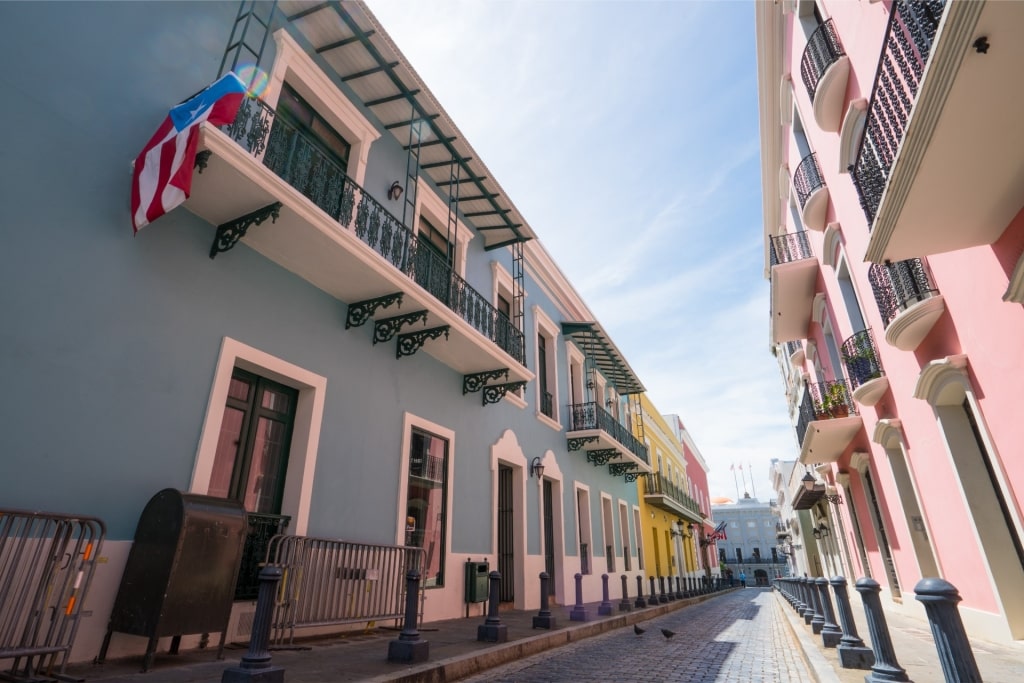
Calle Fortaleza
One of the most photographed streets in the Caribbean, the cobblestone Calle Fortaleza in Old San Juan is a vibrant mix of colonial history, modern art, boutique shopping, and café culture.
Running from the waterfront governor’s mansion La Fortaleza to the central Plaza Colón square, it captures the spirit of the old town in microcosm; iconically beautiful but also bustling and chaotic. Gaze up for amazing street art installations, including umbrellas, kites, and doves, and down for designer shops, artisan jewelers, and cafés with a movie set vibe.
It’s worth stopping at La Fortaleza, the oldest executive mansion in the Western Hemisphere, dating from 1533. If it’s hot, head a street over to Señor Paleta on Calle Tetuán. They serve innovative popsicles with flavours such as mango chilli.
Piñones
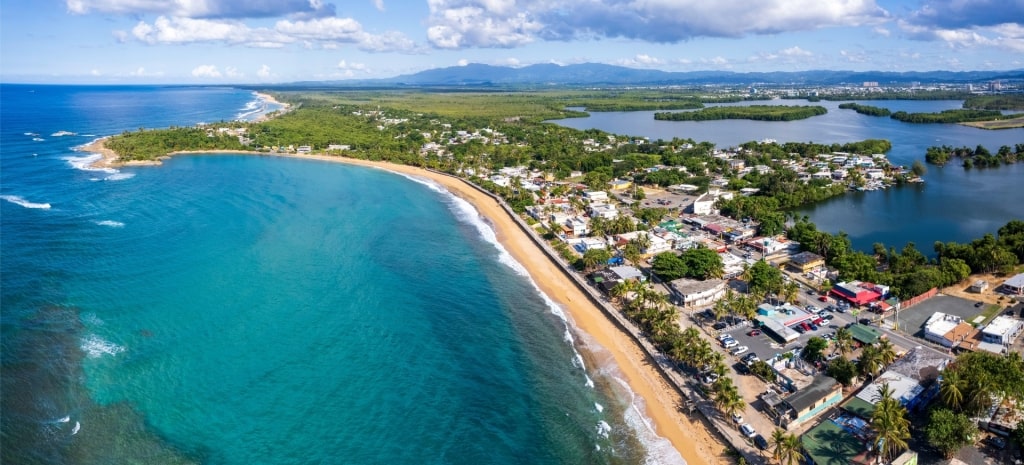
Piñones
The further you get from Old San Juan, the wilder Puerto Rico gets and the Piñones neighborhood sits right on the cusp of the change. Ideal for those looking for authentic Puerto Rico away from the crowds, it stretches east past the Isla Verde, offering the visitor rustic beaches, oceanfront boardwalks, and street-food vendors providing tasty Puerto Rican dishes from open grills.
The area is home to one of the largest Afro-Puerto Rican communities, their traditional music styles Bomba and Plena often blaring out from transistors on the food stalls and impromptu dancing a common sight.
The beaches here are a little wilder than Isla Verde with fewer lounge chairs. But there is the Piñones Trail, a series of boardwalks stretching for several miles through the mangroves as it winds down the coast. It’s perfect for walking or cycling to work up an appetite for pinchos, or meat skewers, bacalaítos, which are cod fritters, or arepas rellenas, corn cake sandwiches, from one of the stalls.
Escambrón Marine Park
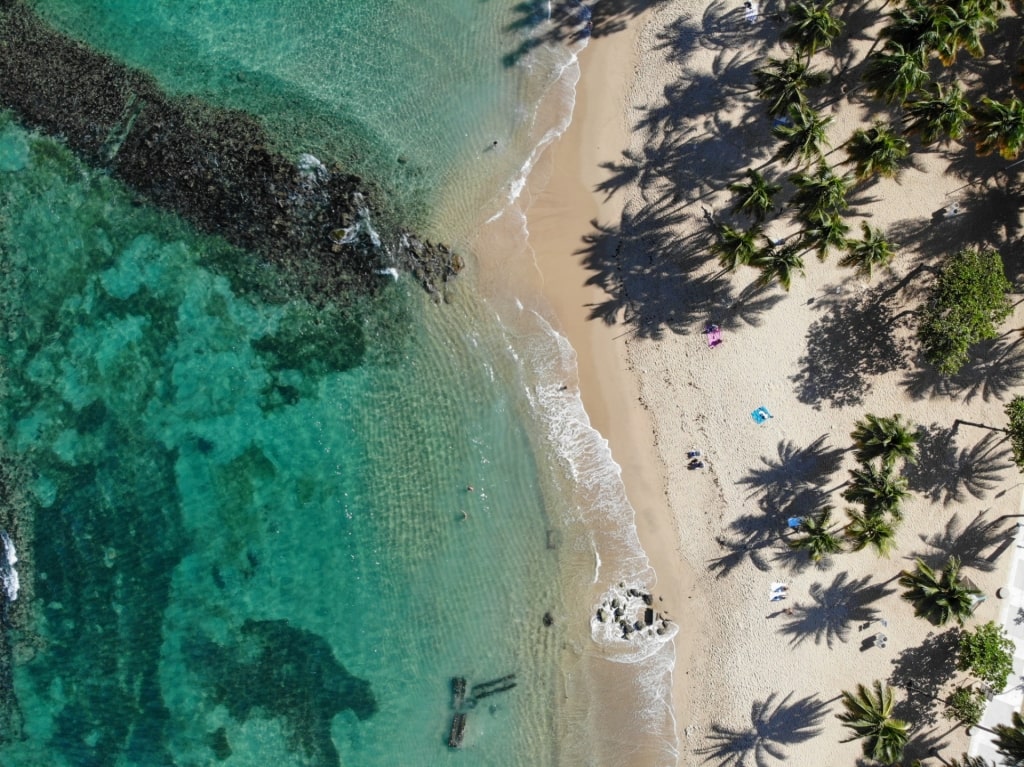
Escambrón Marine Park
There’s more beachside action at what officially goes by the tongue-twisting name of Parque Nacional Luis Muñoz Rivera – Playa del Escambrón.
The marine park is located in what was once part of San Juan’s defensive structure, protected by a reef. It’s perfectly set up for people to take their first steps into snorkeling and scuba diving.
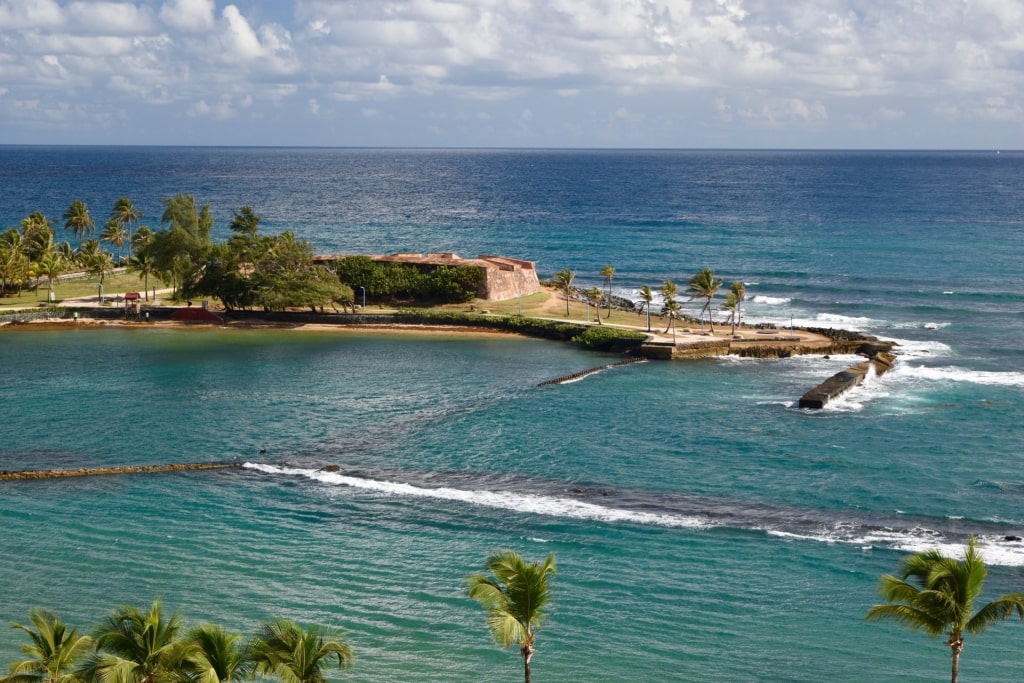
Escambrón Marine Park
Aside from the chance to picnic and pick out colored fish, Escambrón’s former role as a military lookout is there for all to see. Gunpowder magazines and crumbling ramparts from the colonial era sit alongside World War II structures including pillboxes and bunkers.
There are technically two beaches here, one more for swimming, and the other geared towards those with snorkel and masks. Restrooms, showers, shaded picnic tables, and food vendors complete the picture.
Condado Neighborhood
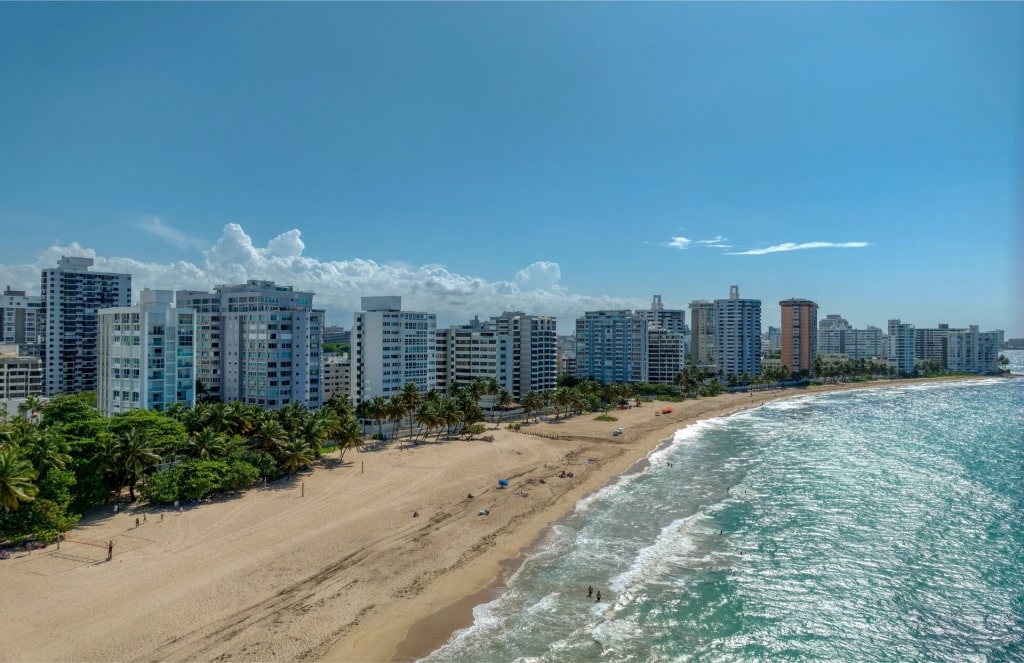
Condado
For Puerto Rico’s answer to Miami’s South Beach, head to the upscale ocean-hugging neighborhood of Condado. Set between Old San Juan and Isla Verde, it’s the kind of place where the beach meets boutiques, and where cocktail hour starts as the surfboards are being put away.
At its heart lies Ashford Avenue, a long thoroughfare with designer shops, sleek hotels, and a lagoon on one side, with white, fine-sand Atlantic beaches on the other.
The neighborhood was set up as an escape for San Juan’s well-heeled in the early 20th century and the Miami vibe continues with the restored mansions of the era, making for great snaps. Check out the elegant 1919 Vanderbilt Hotel, built by the famed hoteliers, for a great example and, if you’re feeling particularly flash, pop into the terrace bar for a drink.
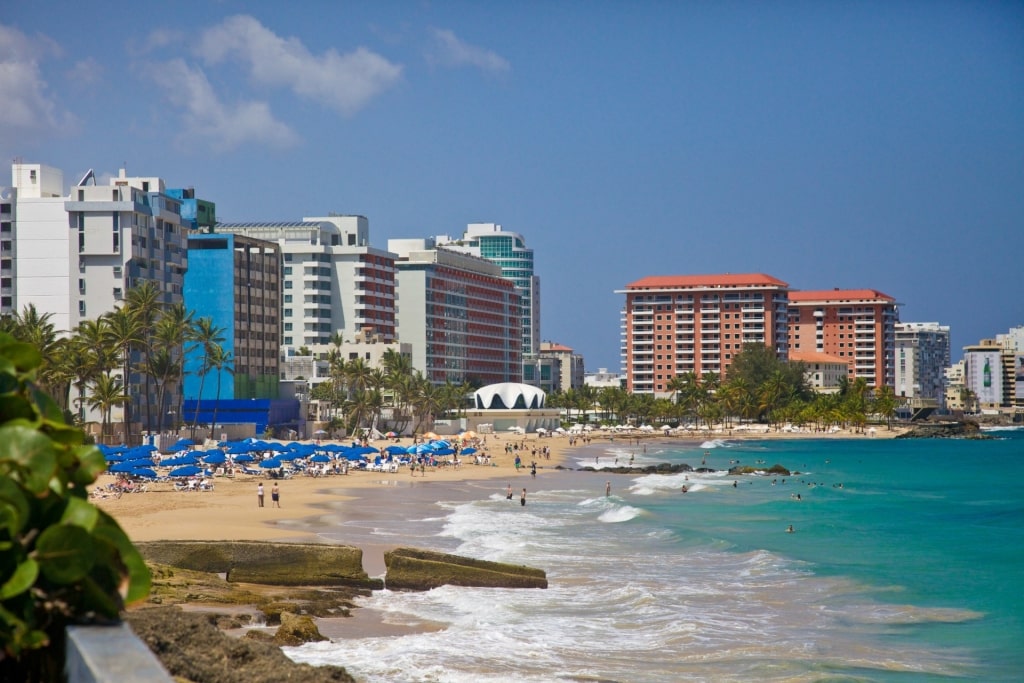
Condado Beach
The beach here may be striking, but it gets more points for style than swimming as the water can be choppy. Head instead to the lagoon for paddle boarding, kayaking, and the occasional manatee sighting.
Shopping on Ashford is excellent, as is some of the dining at places including Serafina and Ola Oceanfront. To just soak in some of the vibes, check out Ventana al Mar, the waterfront park at the heart of Condado.
Hacienda Campo Rico
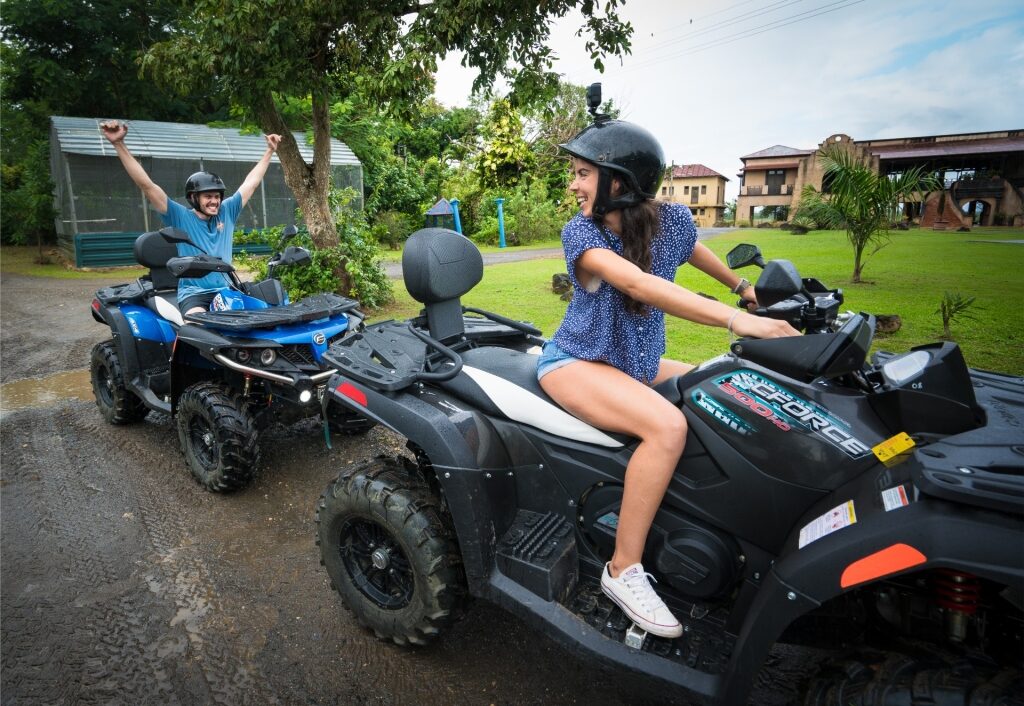
Hacienda Campo Rico
For a fascinating glimpse of what the island’s plantations used to look like, this sprawling estate lies in the Carolina district, just a short drive from San Juan, despite feeling miles away.
The hacienda is set in over 2,200 acres of what was once prime plantation. The owners have transformed the estate into a multipurpose venue offering event spaces and outdoor activities. Check out Mi Casa, the original 19th-century hacienda that is now an events space, to learn about its past.
Take a guided walk around the estate, jump on an ATV or horseback tour, or whizz over the canopy on a zipline. Archery tag, a combination of dodgeball, paintball, and archery, can be a lot of fun if there are enough people to form teams. At the end of a visit there’s a Mojito Bar, with a terrace offering comfort food and what are claimed to be the best mojitos on the island.
Read: Puerto Rico Travel Guide
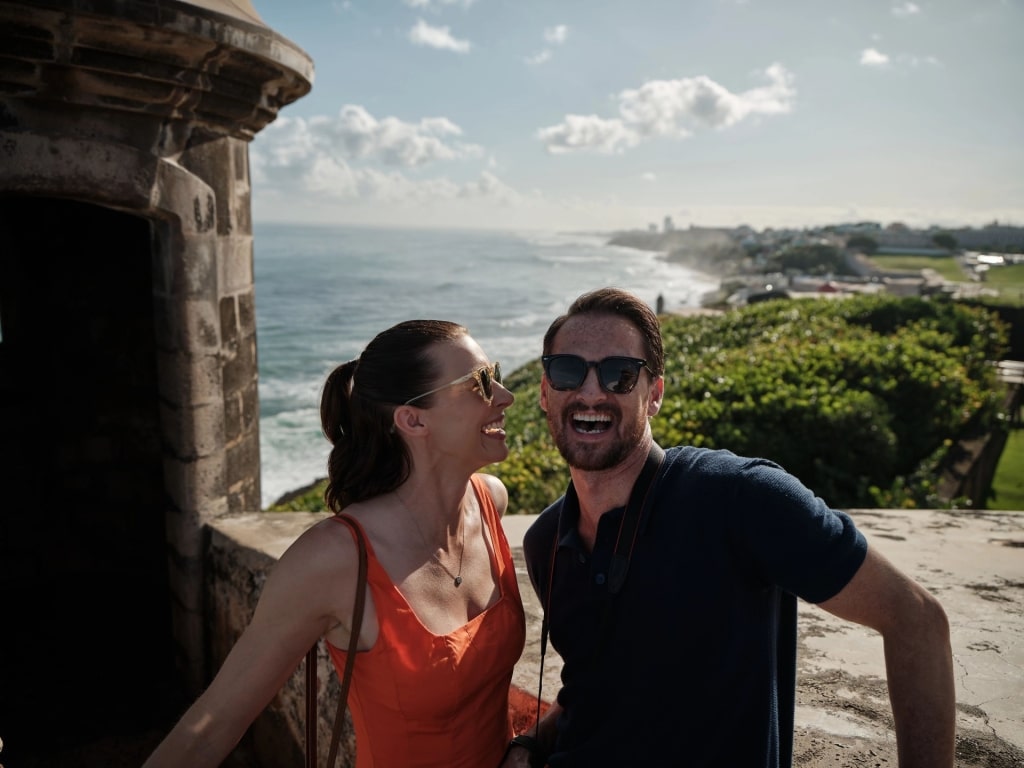
Castillo San Felipe del Morro
Discover this vibrant island for yourself. Browse Celebrity’s cruises to San Juan and plan your Caribbean adventure.


